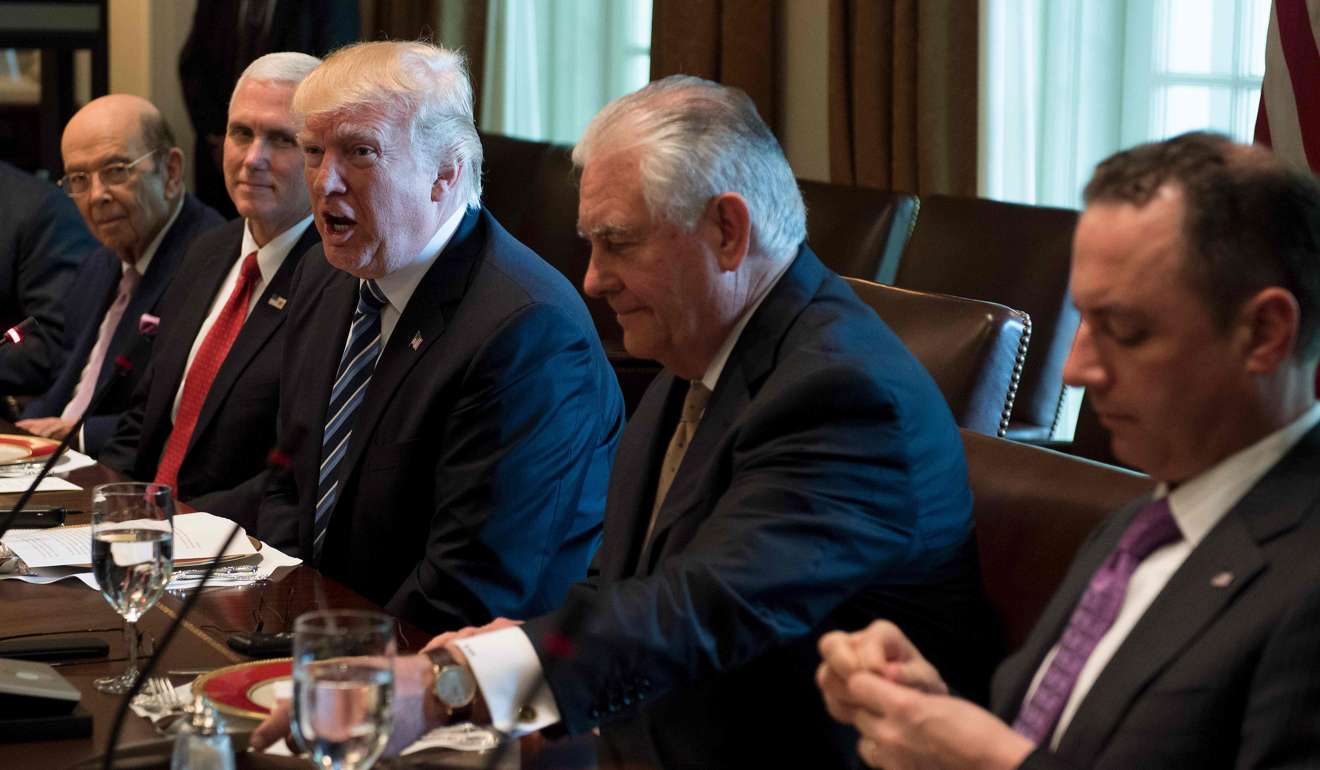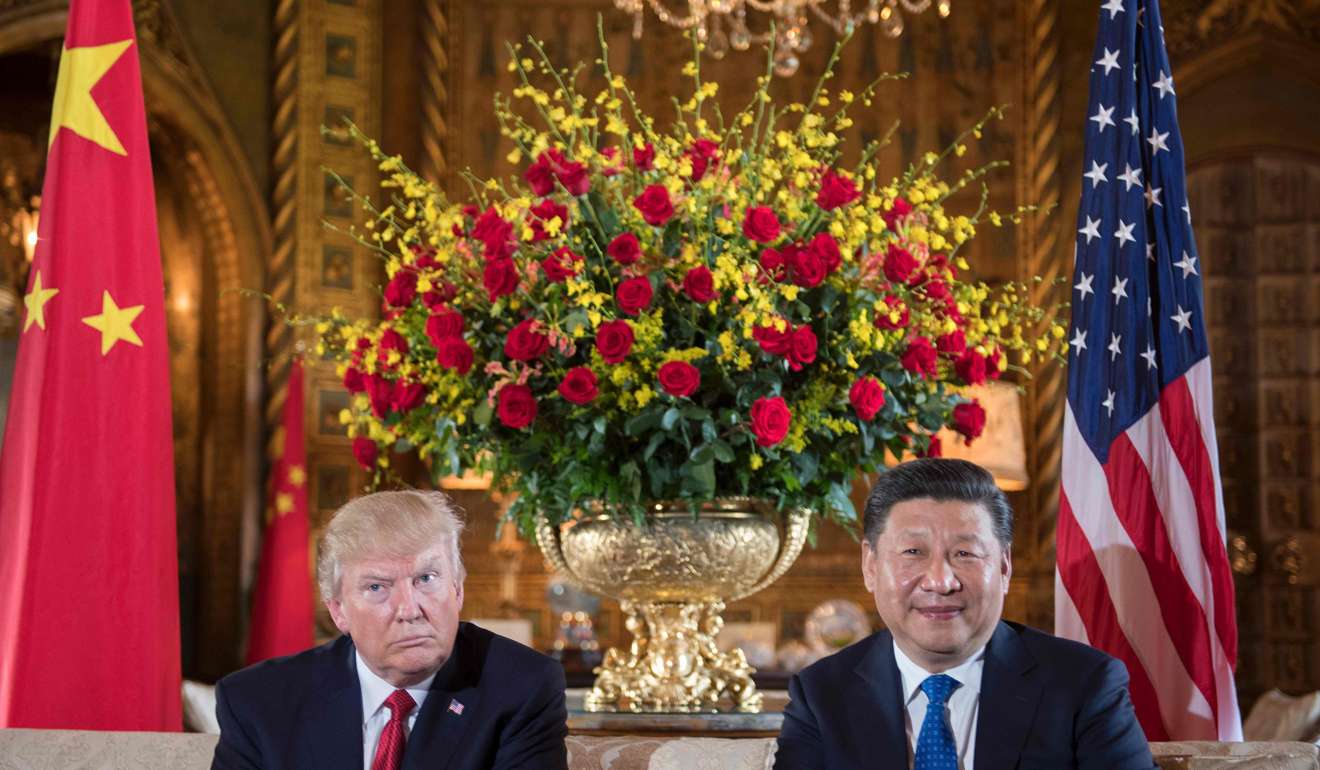
Comment: Trump’s policy on Asia is a shambles
There is still no clear direction guiding the new administration’s foreign relations, writes Richard Heydarian
Nearly a hundred days into the administration of US President Donald Trump and we are still confronted by an empire in utter chaos, a whimpering superpower with no clear foreign policy direction.
While it has promised to “remain active and engaged in Asia” under “its own formulation”, so far what we mostly see is an unbearable policy dissonance that is chipping away at the United States’ credibility in the region.
Already struggling with historically low trust ratings, with the majority of Americans expressing their distrust in the president’s ability to make good on his promises, the “art-of-the-deal” Trump is under pressure to deliver.
On the domestic front, the White House has suffered successive legal setbacks vis-à-vis its controversial travel ban on several Muslim-majority countries. Then came the dead-on-arrival American Affordable Care Act, also known as “Trumpcare”, which had little chance of survival amid vicious criticism by both Republicans and the entire Democratic bench in Congress.
Meanwhile, US foreign policy, particularly in Asia, is still, to put it mildly, under construction, with no clear resolution in sight. Trump has yet to assemble an “Asia team”, which will oversee the day-to-day operations of the National Security Council, Pentagon and State Department in the region.
Both Defence Secretary James Mattis as well as Secretary of State Rex Tillerson have struggled to get their preferred undersecretaries in place. In many cases, the issue seems to be more political rather than meritocratic. Mattis failed to install Mary Beth Long, a veteran Pentagon official, while Tillerson failed to install Elliott Abrams, a prominent neo-conservative wonk, as their undersecretaries. This was reportedly due to their earlier participation in the “Never Trump” campaign, featuring 150 leading Republican national security experts.

The abrupt and surprising firing of Obama-era American ambassadors has also left a huge, though temporary, diplomatic vacuum in leading capitals across Asia. The steep cut, 28 per cent, in the State Department’s budget, which was opposed by Trump’s leading generals, is not going to help either.
As a result, Tillerson has been left disempowered, diffident and increasingly marginalised, a captain of a ghost ship with seemingly no direct influence on shaping US foreign policy.
The upshot is a gnawing competence gap in the American foreign policy establishment, undermining the ability of Washington to craft, never mind effectively implement, a coherent and nuanced policy in Asia.
Throughout his presidential campaign, Trump offered a vision of a militarily-strong and diplomatically intransigent America, which will unmistakably place the interest of its own citizens before that of friends and rivals.
He has promised to increase US military spending by 10 per cent and build a massive 350-ship naval fleet, featuring a diverse array of carriers, attack submarines and littoral combat ships.
Although the North Atlantic Treaty Organisation and European allies have failed to escape his scathing remarks, the new US president has been primarily focused on American interests in Asia.
Along the way, Trump threatened both rivals and allies, namely China and Japan, with punitive sanctions to address the US’ gnawing trade deficit, while threatening weaker allies such as South Korea with strategic abandonment. He even threatened to revisit the decades-long one-China policy to Beijing’s utter outrage.
The past three months, however, saw senior US officials, namely Mattis, Tillerson, and Vice -President Mike Pence, embarking on a relentless tour aimed at reassuring perturbed European and Asian allies.
In fact, during his visit to China, Tillerson struck an uncharacteristically cordial tone, advocating a Sino-US relationship based on the principles of “non-conflict, non-confrontation, mutual respect, and win-win cooperation”.
Even Trump himself has walked back much of his earlier tough talk, now reassuring Japan of his “100 per cent” support, while extending an olive branch to China. To be fair, Trump summit with Chinese President Xi Jinping at the Mar-a-Lago resort went smoothly and according to the script, but there were no concrete agreements between the two superpowers on key areas of disagreements, especially trade.

Even on defence issues, there seems to be no coherent policy or change, although Trump has taken a more aggressive position on Syria, Afghanistan and North Korea, which has pleased the Republican base, but perturbed strategists and international partners.
In the South China Sea, for instance, the new administration promised a tougher approach through expanded and more aggressive freedom of navigation operations in the area, primarily aimed at challenging China’s maritime claims around reclaimed land features in the Spratly and Paracel chain of islands.
Earlier, Tillerson went so far as dangling the option of naval blockade, while the influential White House adviser Steve Bannon did not shy away from fantasising a direct confrontation with China over the South China Sea.
More recently, however, the Pentagon has failed to secure White House approval to conduct routine freedom of navigation operations in the area.
Meanwhile, until Pence’s brief visit to Jakarta, smaller allies and partners in Southeast Asia anxiously awaited a single major US policy pronouncement vis-à-vis the Association of Southeast Asian Nations.
Throughout the region, there is growing fear that Trump’s trade protectionism may eventually extend to smaller economies such as Vietnam, Thailand, Malaysia and the Philippines, which also run substantial trade surplus with the US.
It isn’t even clear whether Trump will attend any of the major Asean-led multilateral events, namely the East Asia Summit, as well as the Asia Pacific Economic Cooperation summit later this year. Even if he does choose to attend, it is doubtful whether Trump will put any concrete trade and economic initiatives on the table.
At this juncture, the US doesn’t seem to have either a coherent diplomatic or defence strategy in Asia. Ultimately, America is still too big to fail, thus many still hope and encourage the Trump administration to eventually get its house in order.
Richard Heydarian is a Manila-based academic and author

